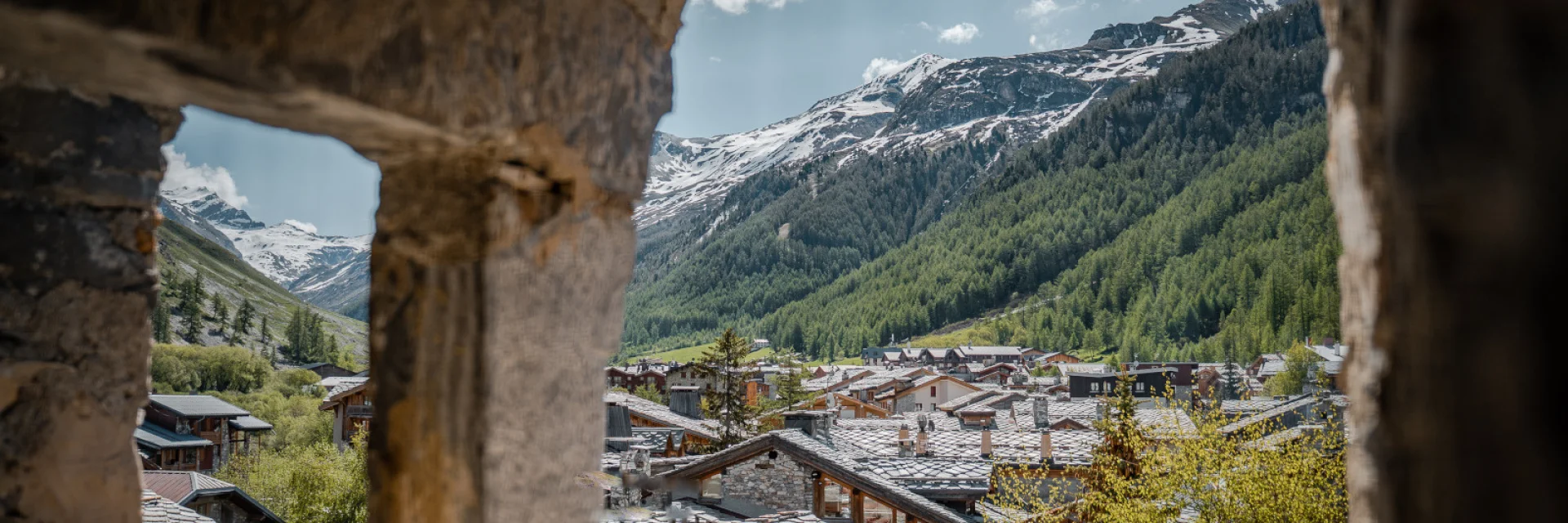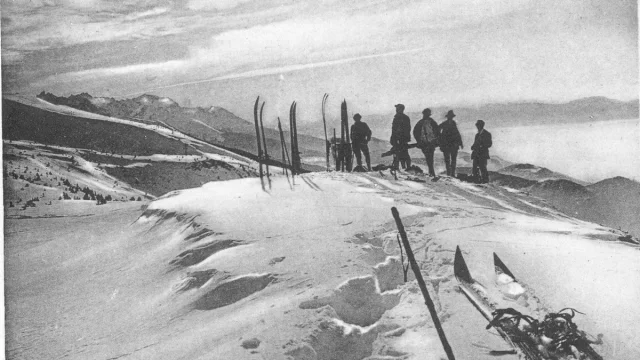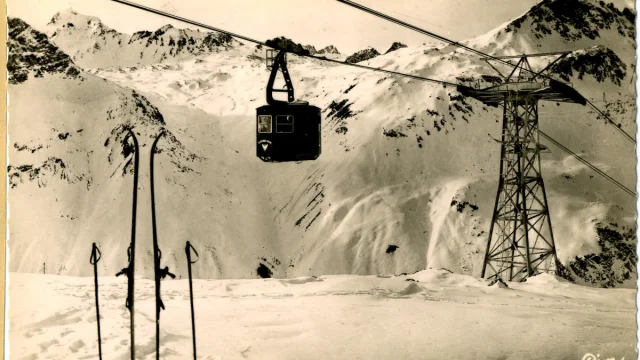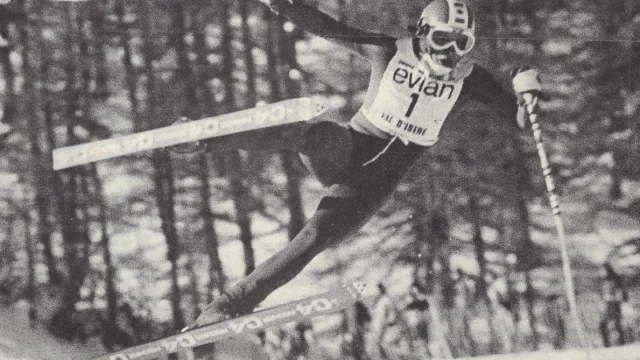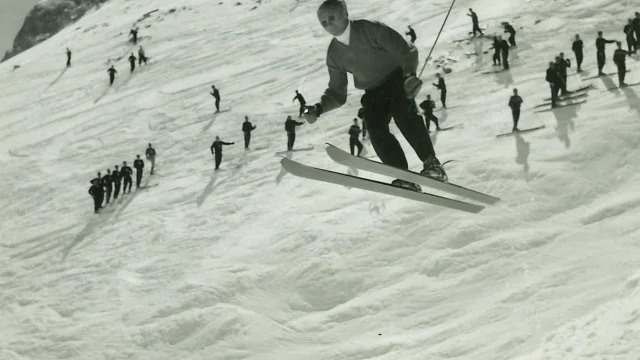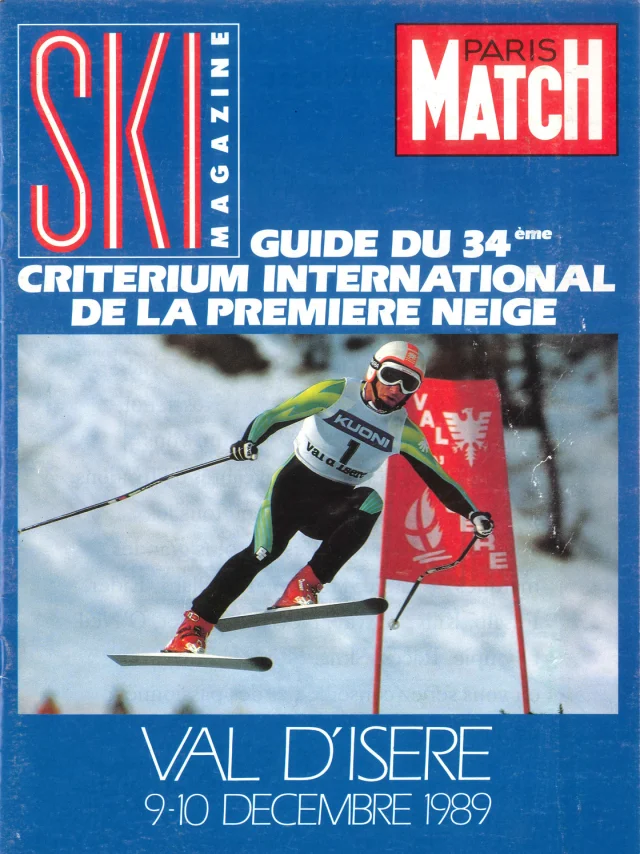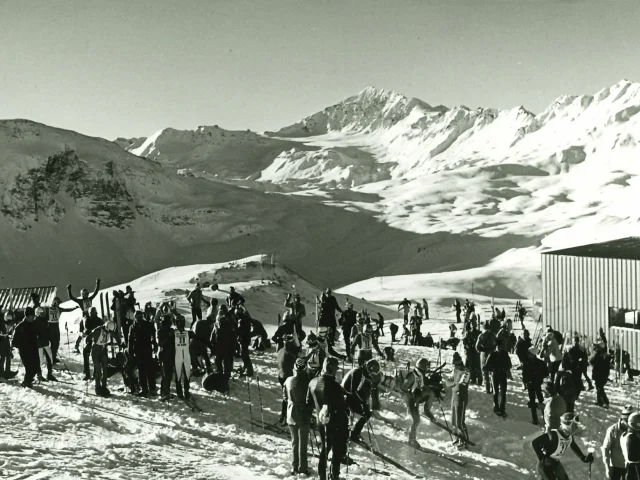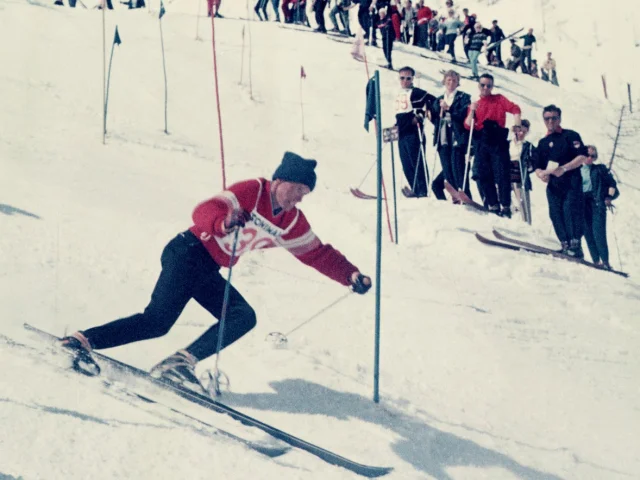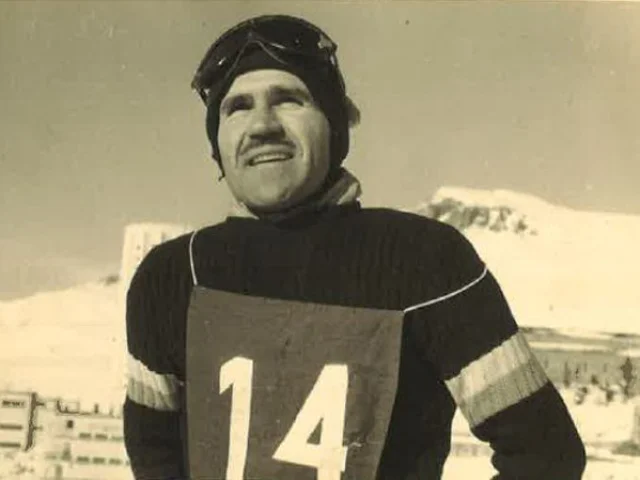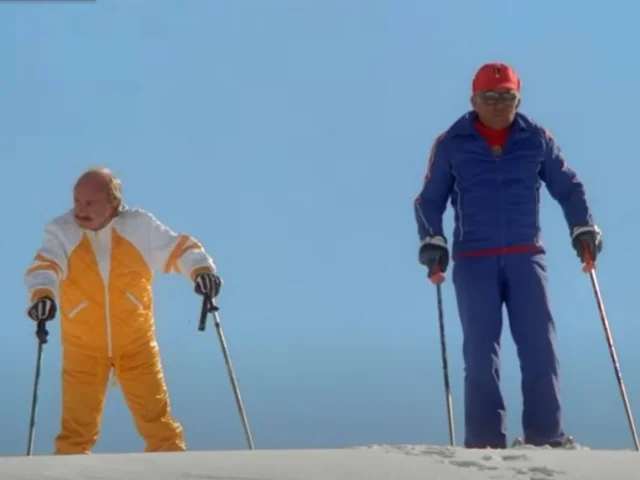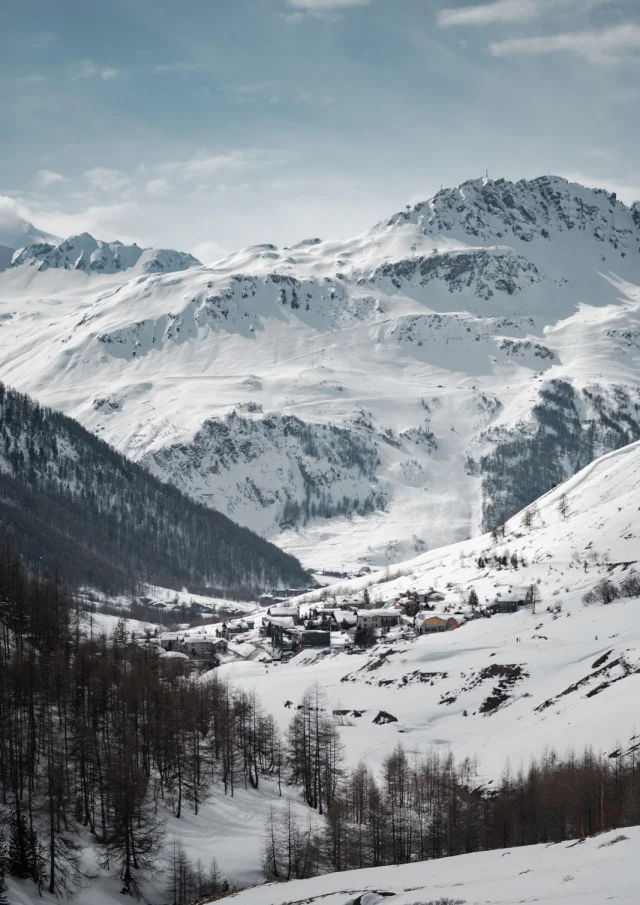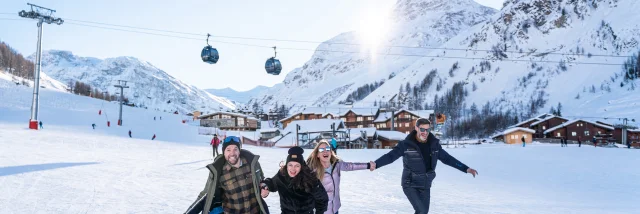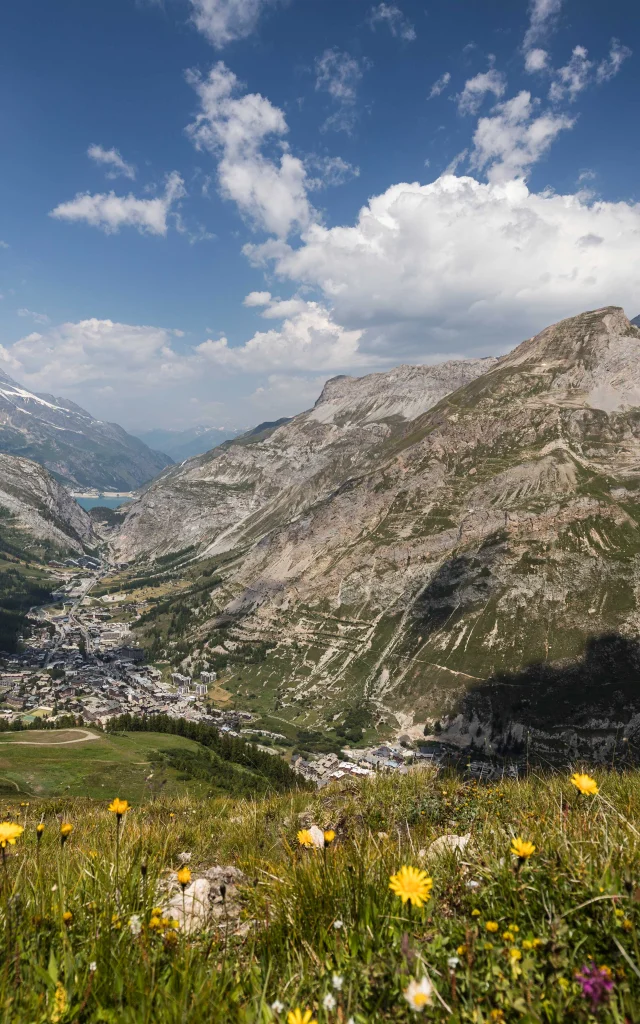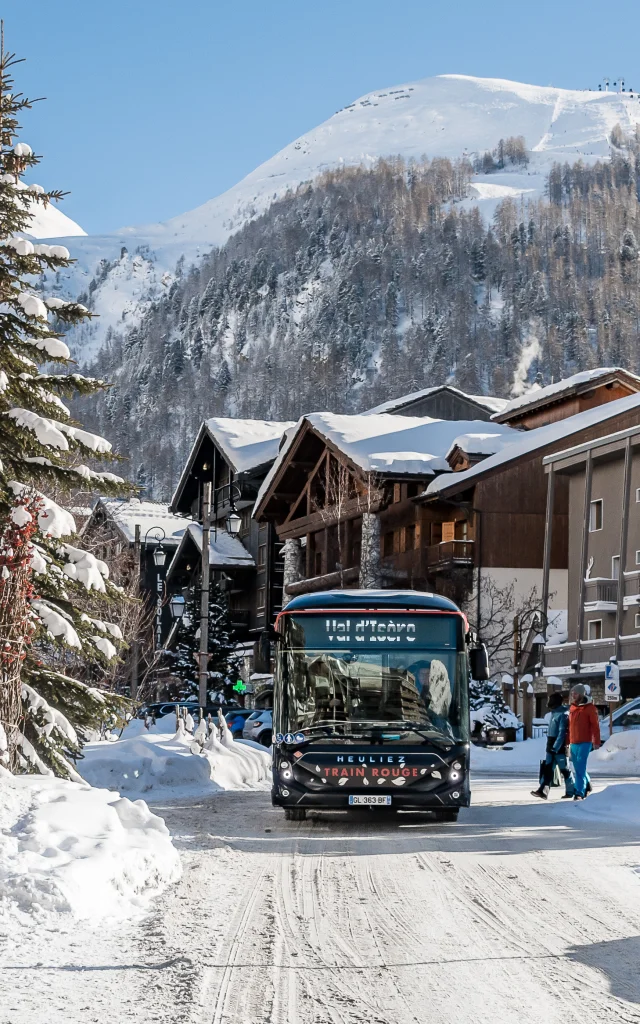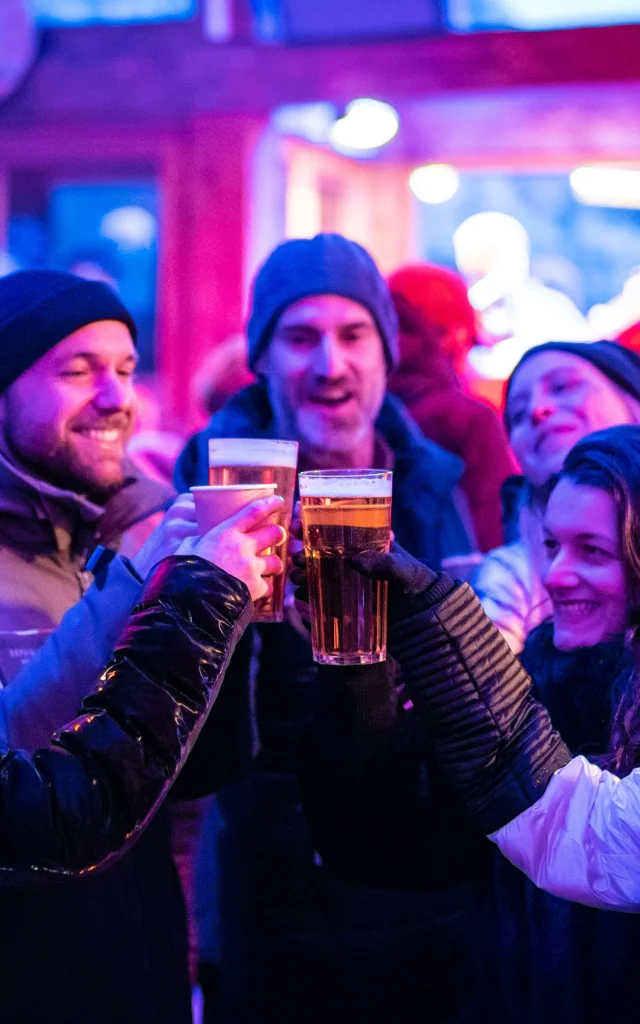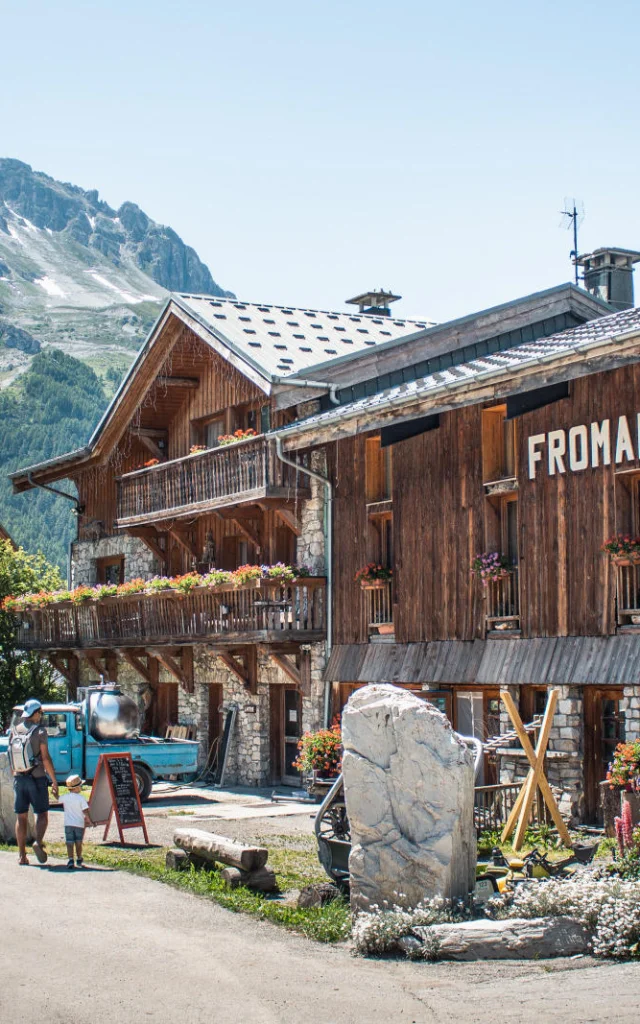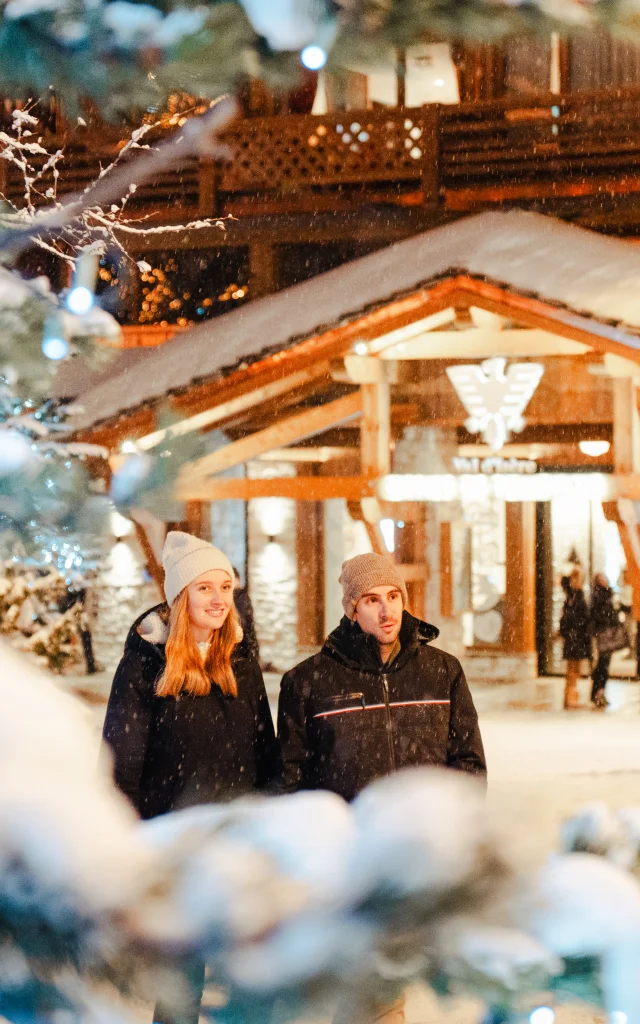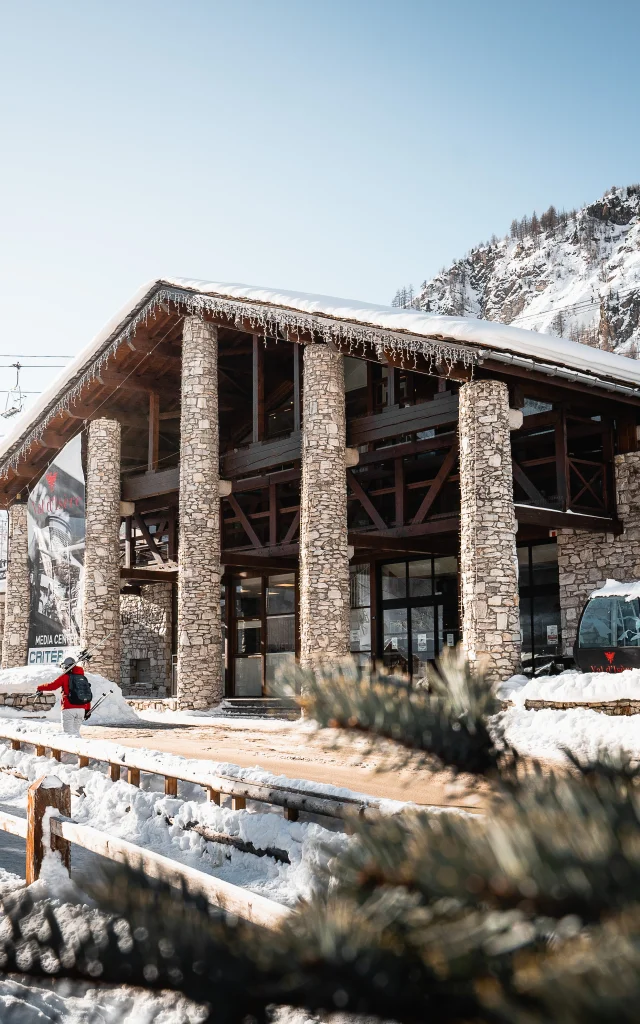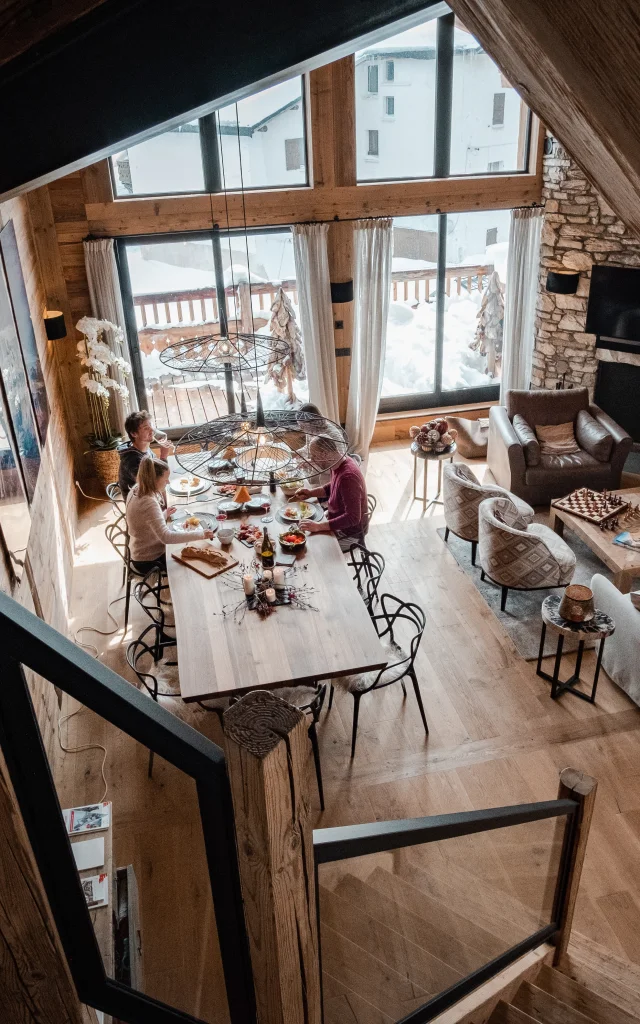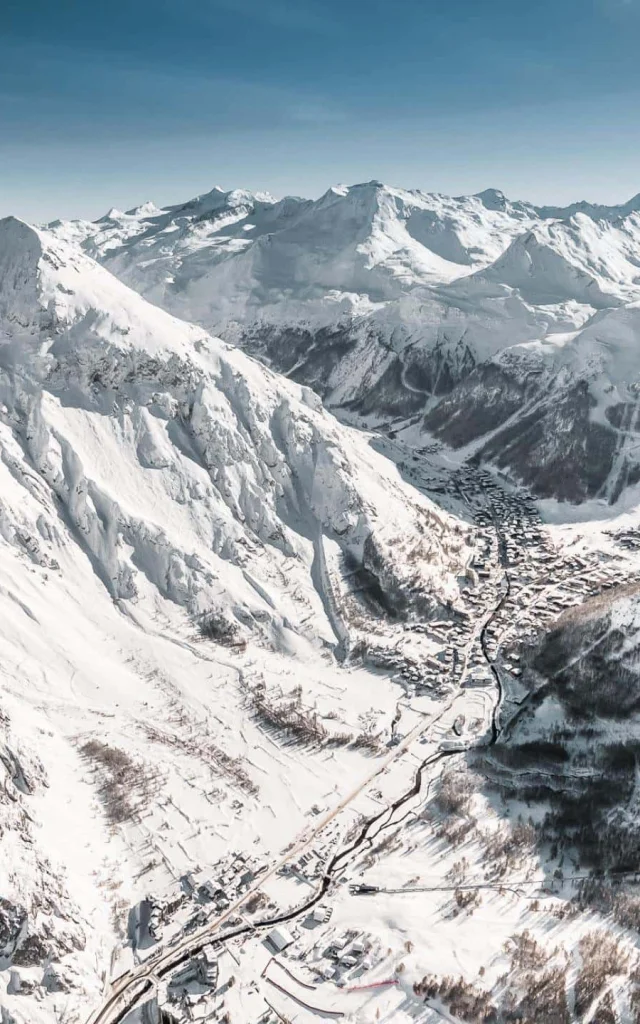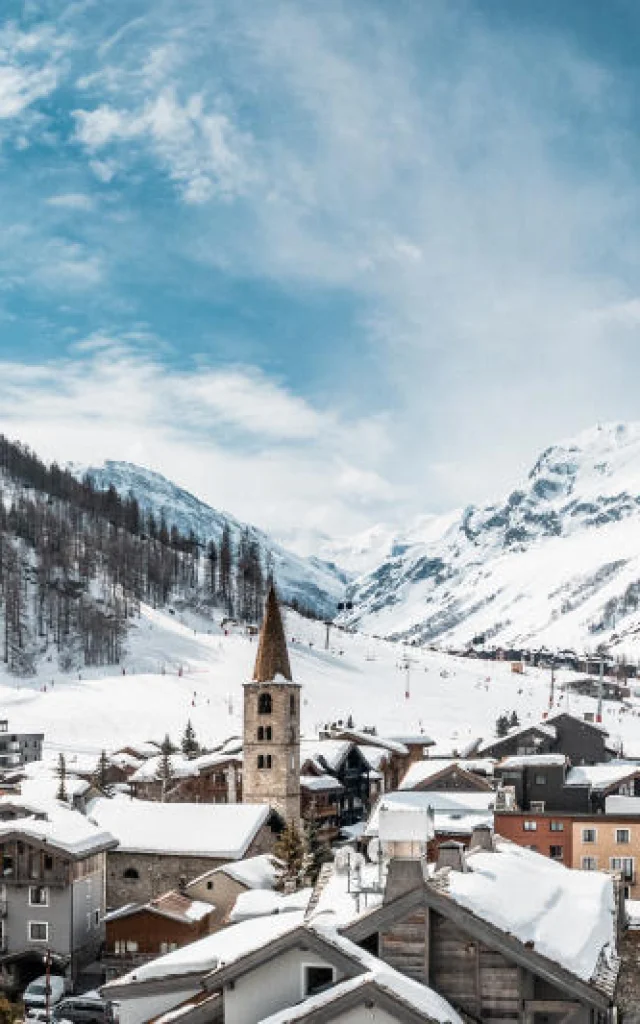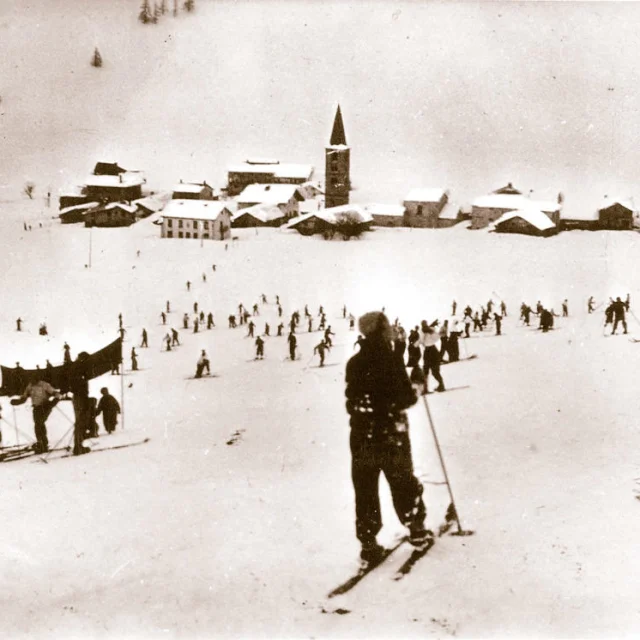 val-d-isere-in-the-time-11
val-d-isere-in-the-time-11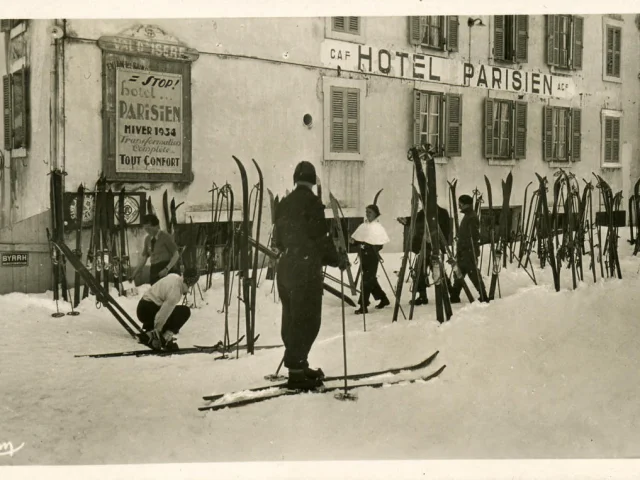 val-d-isere-in-time-6
val-d-isere-in-time-6Pioneers & visionariesBirth of a resort
Having fallen in love with Val d’Isère during his first stay in 1929, Jacques Mouflier was convinced of its potential as a resort. The mayor, Nicolas Bazile, thought this was impossible because of the harsh climate and the remote location of the village. But when the two men met in 1931, plans for the resort began to emerge.
From 1932, the development of public infrastructures paved the way, with a post office, power supply, running water and the building of an approach road, as well as the first hotels.
In 1936, the first tourist office was created to represent all of the resort’s business activities. A planning scheme was approved to ensure the characteristics of the village would be safeguarded, splitting the municipal territory into two zones (sports activities and real estate).
In 1937, two ministers got stuck in a storm, the same year that the Iseran pass opened. That was how Val d’Isère became a household name in France.
Destiny of a mountain village that became a world-class ski resort.
